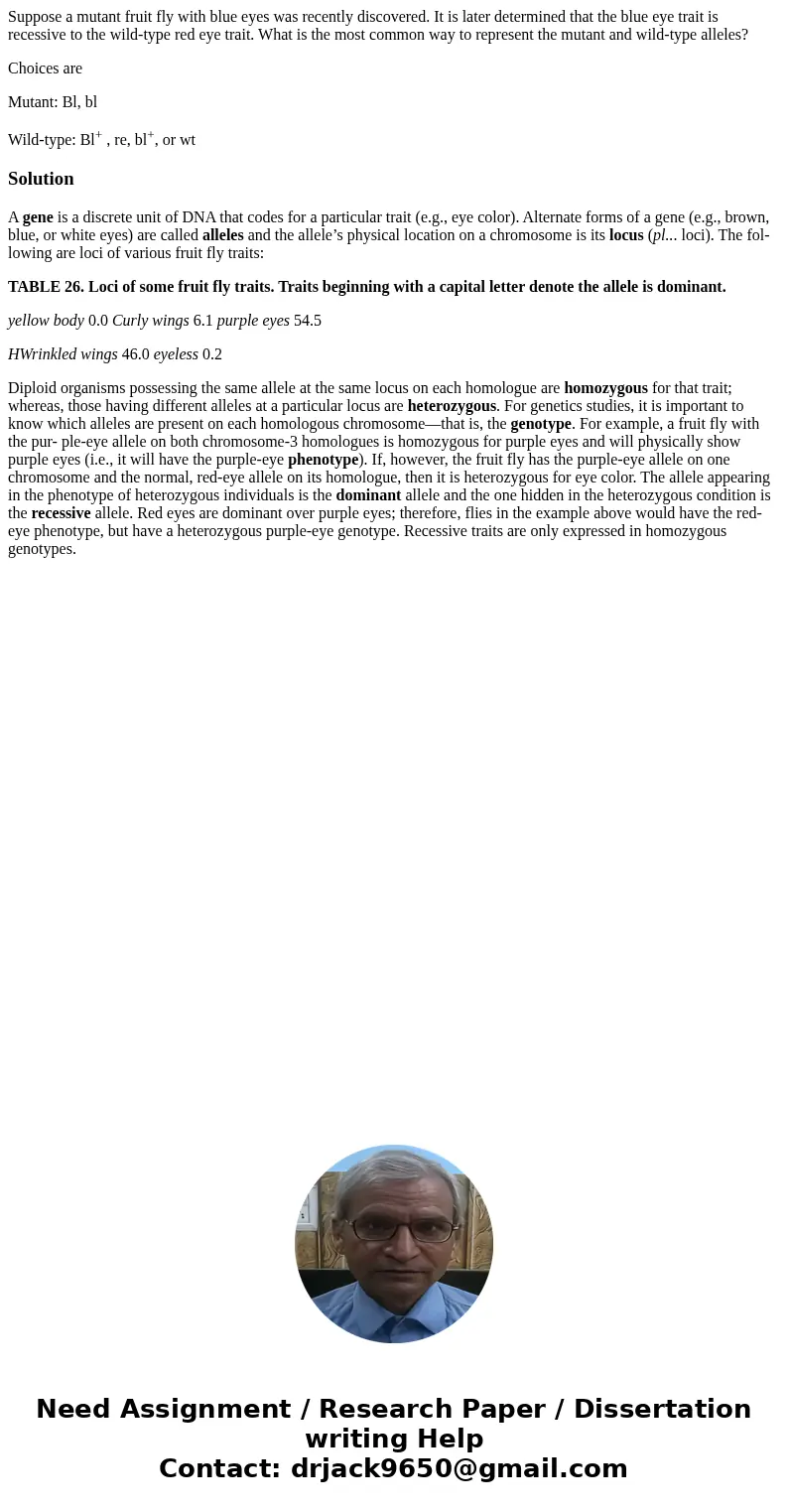Suppose a mutant fruit fly with blue eyes was recently disco
Suppose a mutant fruit fly with blue eyes was recently discovered. It is later determined that the blue eye trait is recessive to the wild-type red eye trait. What is the most common way to represent the mutant and wild-type alleles?
Choices are
Mutant: Bl, bl
Wild-type: Bl+ , re, bl+, or wt
Solution
A gene is a discrete unit of DNA that codes for a particular trait (e.g., eye color). Alternate forms of a gene (e.g., brown, blue, or white eyes) are called alleles and the allele’s physical location on a chromosome is its locus (pl... loci). The fol- lowing are loci of various fruit fly traits:
TABLE 26. Loci of some fruit fly traits. Traits beginning with a capital letter denote the allele is dominant.
yellow body 0.0 Curly wings 6.1 purple eyes 54.5
HWrinkled wings 46.0 eyeless 0.2
Diploid organisms possessing the same allele at the same locus on each homologue are homozygous for that trait; whereas, those having different alleles at a particular locus are heterozygous. For genetics studies, it is important to know which alleles are present on each homologous chromosome—that is, the genotype. For example, a fruit fly with the pur- ple-eye allele on both chromosome-3 homologues is homozygous for purple eyes and will physically show purple eyes (i.e., it will have the purple-eye phenotype). If, however, the fruit fly has the purple-eye allele on one chromosome and the normal, red-eye allele on its homologue, then it is heterozygous for eye color. The allele appearing in the phenotype of heterozygous individuals is the dominant allele and the one hidden in the heterozygous condition is the recessive allele. Red eyes are dominant over purple eyes; therefore, flies in the example above would have the red-eye phenotype, but have a heterozygous purple-eye genotype. Recessive traits are only expressed in homozygous genotypes.

 Homework Sourse
Homework Sourse